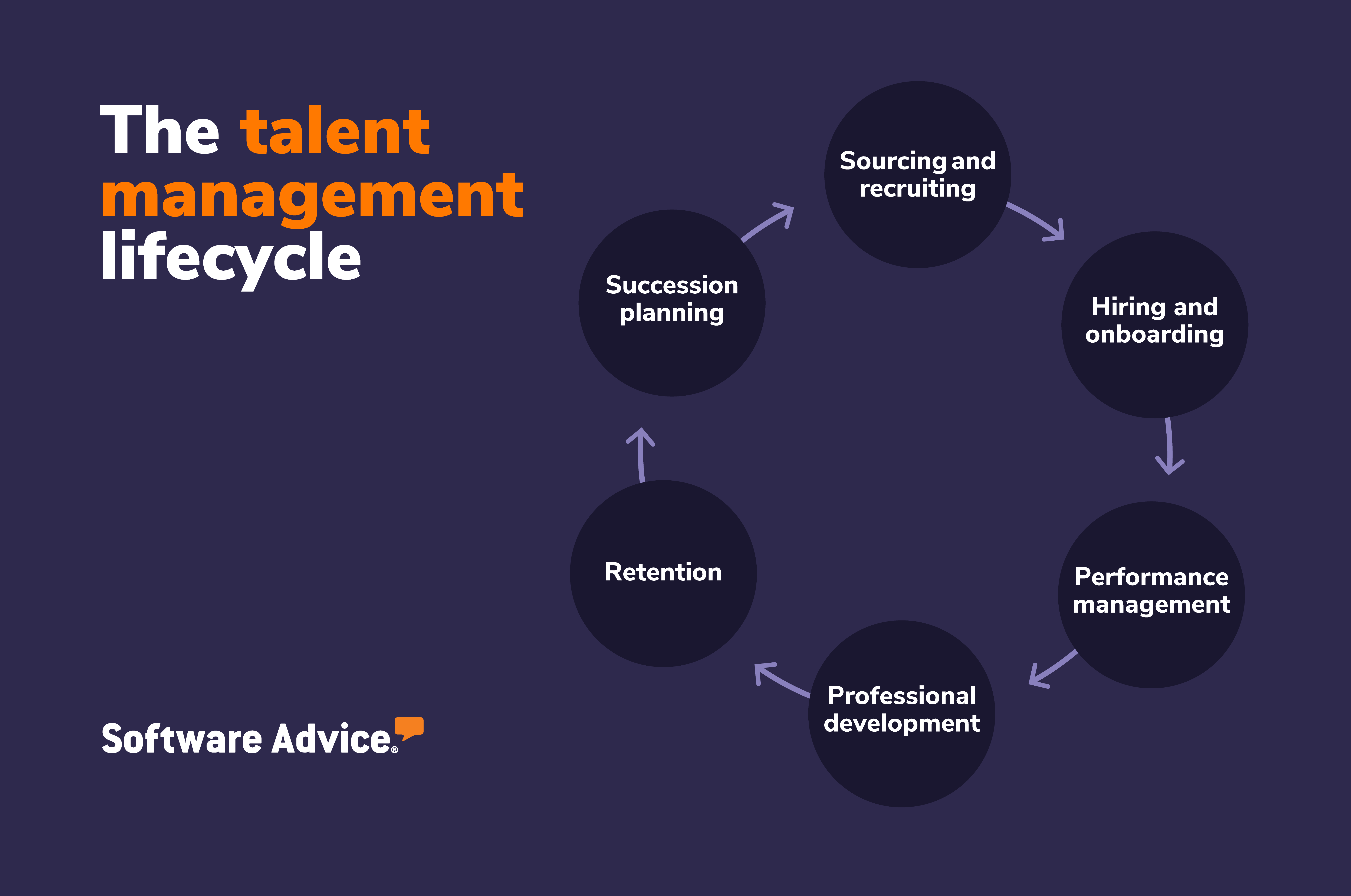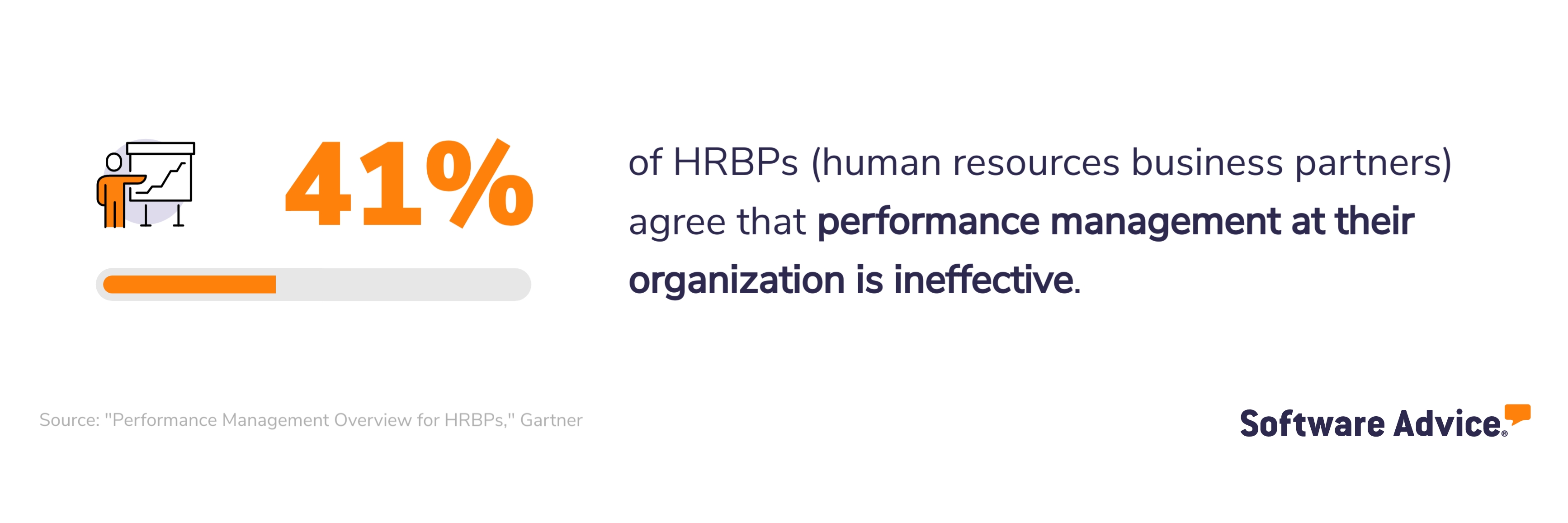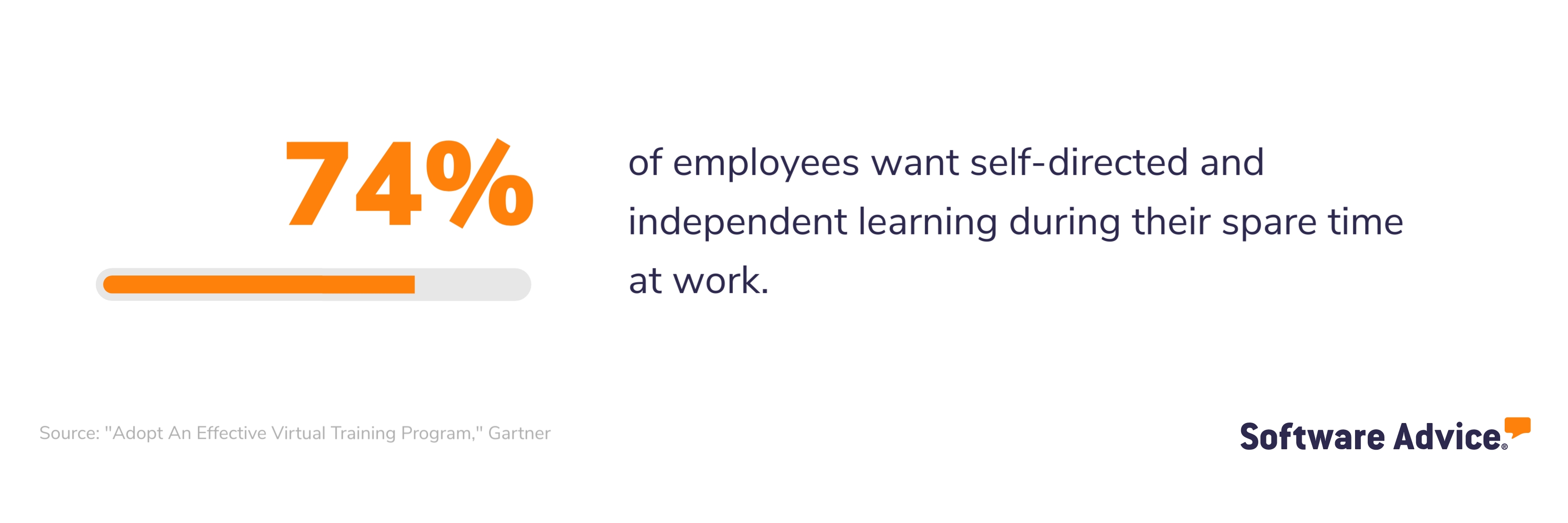The 6 Stages of the Talent Management Lifecycle and HR's Role in Them
Listen up, HR leaders: If you want to strengthen your department’s impact on business outcomes, you need to reframe your talent management strategy so that it’s connected to key stages of the talent lifecycle.
From attracting the right people to identifying and developing future leaders, understanding the six stages of the talent lifecycle and how to manage them will help position your HR team as a strategic partner to the business (rather than just a supportive function).
Ahead, we’ll take a look at each stage of the talent lifecycle and use survey data and research from Gartner [1] to explain what HR leaders need to know to successfully manage each stage.
What is the talent management lifecycle?
The talent management lifecycle refers to a series of phases in the employee-employer relationship. There are many different interpretations of the stages within the talent lifecycle, but the overarching themes remain the same:

Why does the talent lifecycle matter for HR leaders?
To successfully manage human capital, HR leaders need to understand the employee lifecycle. For starters, it helps them better meet their workforce’s needs, whether that’s through updating their total rewards offerings or providing more development opportunities. And just as importantly, it helps them make more informed decisions when attracting and developing talent for the future needs of their organization.
Plus, it’s important to know that failing to consider the cyclical nature of the talent lifecycle can cause valuable people to leave your organization—an unfavorable possibility in a time where only 29% of candidates in the applicant pool are identified as high quality or high potential (compared to the 38% that are poor quality) [1].
And we have further evidence that today’s HR professionals aren’t managing each stage of the talent lifecycle with the same level of attentiveness: In a recent Software Advice survey*, we asked HR professionals to rank the six stages of the talent lifecycle from the most important to have data for decision-making to the least important. Recruiting and attracting talent was seen as the most important to have data for, followed by hiring and onboarding, then learning and development. Retention was seen as the least important, narrowly beating out performance management and employee engagement.
From this, we can assume that the majority of HR professionals collect data to make decisions about recruiting, hiring, and development, but the latter half of the talent lifecycle (performance management, retention, and succession planning) are often under prioritized. Now is the time to correct this, because employee retention is currently a top priority for businesses. According to a 2022 survey conducted by Gartner, 32% of tech CEOs reported “retaining employees” as the topmost internal challenge [2].
Ahead, we’ll give an overview of each stage and cover the steps you should take to ensure that every part of the employee lifecycle is considered in your talent management strategy.
1. Recruiting and attracting talent
The lifecycle begins with talent acquisition efforts such as sourcing, attracting, and recruiting talent. This stage is primarily focused on getting high-quality candidates interested in your organization as a potential employer.
Recruiters, as well as recruiting directors, are the key players here, but some efforts to strengthen talent acquisition initiatives are handled by other HR team members. For instance, building an attractive employee value proposition (EVP) requires offering substantial benefits—a task that would typically fall under a benefit administrator’s responsibilities.
Bookmark these resources related to recruiting and talent acquisition:
Tips to strengthen the talent acquisition stage:
Build a strong EVP: 65% of candidates report they have actually discontinued a hiring process due to an unattractive EVP [3]. Offering competitive compensation and benefits, as well as perks (such as flexible work arrangements), will help you stand out as an attractive employer. We offer more specific guidance on building and promoting your EVP here.
Develop a structured interview process: Without standardizing your interview process, candidates don’t have a fair chance. In order to make sure you’re making the right hire, ask each interviewee the same set of questions in the same order. We’ve put together a step-by-step guide to developing a structured interview process for organizations who have yet to embrace this strategy: Here's How to Properly Conduct a Structured Interview.
Invest in tools that streamline the process: Software Advice’s Recruiting Strategy Survey** found that 77% of organizations either already have or are considering purchasing an applicant tracking system (ATS). ATS, as well as other recruiting platforms, are the new norm for organizations. These tools automate aspects of the recruitment process (such as sourcing and communicating with candidates) so that your team can spend their time on higher priority tasks. For help finding an ATS or recruiting tools for your organization, chat with one of our software advisors or browse our recruiting software 2022 FrontRunners.
2. Hiring and onboarding
The second stage of the lifecycle occurs between the time a candidate accepts an offer and their first few months in the role. Onboarding is a constant focus area for HR, with over 82% of organizations offering some kind of formal onboarding program. However, just one-quarter of organizations agree their onboarding programs are effective [4].
Onboarding programs should prepare new hires to take on the core responsibilities of their roles while also connecting them to their company’s culture and mission. Because of the breadth of activities it takes to make this happen, this stage is best co-managed by onboarding specialists and people managers.
Learn everything you need to know to successfully manage the onboarding stage with our guide:
Tips to strengthen the onboarding stage:
We suggest taking the time to read the content featured above, but in the meantime, here are two key to-dos for this stage:
Gather data through candidate experience surveys: It’s tough to determine where your interviewing and onboarding process can be improved without asking those who have gone through it. Surveys are an essential tool for gathering feedback from new hires. And here’s another tip: We offer a free template to use when creating a candidate experience survey in our content: What To Ask In A Candidate Experience Survey.
Check in with new hires after the first 30, 60, and 90 days: It’s easy for hiring teams to move on to the next open position after an offer is accepted, but there’s value in checking in on new hires throughout their first few months on the job. Hiring managers should adopt the practice of connecting with new hires at their 30-, 60-, and 90-day milestones to ensure they feel supported and confident in their new position.
3. Performance management
Once an employee has been in their role for a reasonable amount of time, the focus shifts from training them to managing their performance. The performance management stage can pertain to an individual employee, a department, or the organization as a whole, and the idea is to determine whether the processes and people in place are delivering the output needed to meet organizational goals.
Gartner reports that organizations that focus on improving the usefulness of performance management experience up to 14% higher engagement and a 24% boost in workforce performance [5]. Despite these benefits, less than half of employees say performance management delivers what they need to perform effectively.

Tips to strengthen the performance management stage:
Gartner’s suggestions for correcting ineffective performance management processes can be summarized into two actionable tips:
Create a formal performance evaluation process: Have department leads and/or people managers set goals for their reports that directly correlate with business outcomes. Then, set a cadence for measuring employees’ progress toward those goals (typically this is done once or twice a year). Tools such as performance management software and 360 degree feedback platforms can help streamline this process and ensure that employees are given a chance to reflect on their own performance, as well as their peers’.
Recognize employees for their accomplishments and contributions: Performance management isn’t only about finding areas for improvement; recognizing what workers are doing well is just as important and can have a bigger impact on employee engagement. Encourage managers to find ways to acknowledge the individual accomplishments of their reports, whether through rewards doled out via employee recognition software or through public-facing praise.
4. Employee development
The first stage of the latter half of the talent management lifecycle is employee development. Development can be thought of as any initiatives or opportunities provided to employees in an effort to teach them new soft and hard skills.
Plenty of proof exists that points to the fact that employees want development opportunities. For instance, in a Software Advice survey*** conducted earlier this year, we asked HR professionals to rank 14 factors that influence their employees’ job satisfaction from most important to least important. Compensation and work-life balance were seen as the most influential, with opportunities to advance their career following closely behind.

All this to say, offering development opportunities can improve your retention rates. And there are other noteworthy benefits as well; for example, developing employees can help better prepare them to step into open roles within your organization in the future.
Need help building a business case for a learning and development program? We’ve got your back:
Tips to strengthen the employee development stage:
L&D leaders are typically tasked with figuring out what kind of development offerings should be prioritized and how the organization should go about delivering them. We’ve provided recommendations and resources below to make these tasks easier.
Invest in e-learning: Our survey*** found that 87% of HR leaders felt their employee learning and development (L&D) program would be critical to retaining talent in 2022. However, less than half (48%) stated that they planned to increase their L&D budget at the time. Kicking off an e-learning program is a great way to introduce self-directed development opportunities to employees, and there are more strategies for doing so than you might think. Check out our content: Corporate E-Learning: 3 Options for SMBs.
Prioritize development goals that are in line with skill needs: To get the best results out of your development program, the courses you offer should align with the skills your business most needs. Conducting a skills gap analysis can help reveal what those are—download our free skills gap analysis template for guidance with this process.
5. Employee retention
The retention stage of the employee lifecycle is centered around strategies for keeping employees engaged and satisfied in an effort to reduce voluntary turnover. While HR leaders are typically responsible for reporting on turnover rates, people managers are usually the ones tasked with taking steps to reduce voluntary turnover on their team.
In “U.S. Employers Should Prepare for a High-Turnover Future,” Gartner predicts that the higher-than-average turnover rates that started in 2020 are going to continue for the foreseeable future. For example, an individual organization that had a turnover rate of 20% before the pandemic should expect that to jump as high as 24% in the years to come [6].
Knowing this, it’s more important than ever for HR leaders and managers to understand (and reduce) the sources of voluntary turnover at their organization.
Must-read content:
Tips to strengthen the employee retention stage:
The guide featured above provides in-depth advice on managing different sources of voluntary turnover, so don’t miss that. In the meantime, here’s what you can do to strengthen this portion of your talent management strategy:
Conduct exit interviews: An often-skipped portion of the offboarding process, exit interviews are formal conversations between an HR professional and a departing employee with the purpose of understanding what drove them to leave. Regularly conducting exit interviews can help expose sources of turnover at your organization. Learn more from our content: Employee Offboarding Checklist: A Guide to Graceful Exits.
Watch this 60-second video: If you’re short on time, you can get the highlights from our Manager’s Guide for Responding to Times of High Turnover in less than a minute by watching this video:
6. Succession planning
The last phase of the lifecycle (before it starts all over again) is succession planning. Succession planning refers to any activities or strategies that help prepare and plan for existing employees to step into leadership roles.
When C-level employees retire or leave an organization to pursue other opportunities, they can’t just be replaced with anybody. Hiring teams have to recruit executives with years of industry experience to step into vacant leadership positions, which is typically a highly competitive experience. Succession planning can help alleviate this challenge, but according to Gartner, organizations only fill leadership positions with identified successors about 30% of the time [7]. Follow the advice outlined in the following section to increase your chance of filling open leadership roles with internal successors.
Related reading:
Tips to strengthen the succession planning stage:
Traditionally, organizations have used a pipeline management approach to succession planning. With this strategy, individuals with potential are identified in each business unit and managed up the pipeline until they’re ready to step into leadership roles. However, Gartner suggests organizations try a new approach: portfolio management.
Adopt a portfolio management approach: With portfolio management, HR leaders start by determining which roles are the most important to plan for based on their organization’s future strategy. Then, successors are identified across the organization (not just individual departments) and are prepared for a variety of future roles. This approach places the emphasis on critical roles and builds the capacity of the leadership bench to evolve as positions change.

Transform your HR function into a strategic business partner
If your talent management strategy doesn’t currently consider the six stages of the employee lifecycle, you’re likely acting as a supportive—not strategic—partner to the business. Use the advice and resources in this guide to correct that, and keep the six stages of the lifecycle in mind when making improvements to your talent management process:
Recruiting and attracting talent
Hiring and onboarding
Performance management
Employee development
Employee retention
Succession planning
And because we’re Software Advice, our final recommendation is this: Invest in tools that help your team practice effective talent management. We’re here to help with that too—get in touch with one of our software advisors for a free shortlist of tools that might fit your needs—it only takes 15 minutes.
Sources
How Recruiting Partnerships Create Competitive Advantage in a Challenging Labor Market, Gartner
Ignition Guide to Monitor Employee Engagement for Improved Talent Retention as a Tech CEO, Gartner
Make Way for a More Human-Centric Employee Value Proposition, Gartner
Onboarding Experience Monitor, Gartner
U.S. Employers Should Prepare for a High-Turnover Future, Gartner
How to Improve Succession Planning, Gartner
Survey methodology
* Software Advice’s 2022 HR Tech Recession Planning Survey was conducted in November 2022 among 300 HR leaders at U.S. companies to understand how they would leverage data and technology to make cost-cutting decisions in a recession. "HR leaders" are defined as HR employees who are at the director-level or above at their employer.
** The Software Advice Recruiting Strategy Survey was conducted in July 2021. We collected 300 responses from workers with recruiting responsibilities at U.S. employers. The goal of this survey was to learn how much companies are struggling with recruiting and hiring, and what solutions they’ve considered to improve recruiting and hiring outcomes.
*** Software Advice’s 2022 Toxic Culture Survey was conducted in January 2022 among 195 HR leaders at U.S. companies with at least six employees who had transitioned from mostly on-site work to mostly hybrid or remote work. An HR leader is defined as any HR employee with the role of HR manager or higher at their organization. The goal of this survey was to learn how the transition to hybrid and remote work impacted toxic employee behaviors.